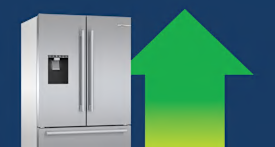Y ou've probably seen plenty of news about cannabidiol (CBD) and marijuana in the past couple of years. People might consider them for similar reasons, but they're not one and the same.
CBD, a compound in marijuana and hemp, provides no "high" and is typically used for anxiety, insomnia, and joint pain. It's legal—to one extent or another—in almost all states and found in a variety of products, including coffee, candy, oils, tinctures, vape pens, cosmetics, and even water.
Almost one-third of U.S. adults tried CBD in the past 24 months, according to a January 2020 nationally representative Consumer Reports survey of 1,142 people. Twenty percent of Americans 65 and older said they'd tried CBD, up from 14 percent in a January 2019 nationally representative CR survey of 4,384 U.S. adults.
Marijuana, which also comes in numerous forms, can make people high because of the delta-9 tetrahydrocannabinol (THC) it contains. (CBD may have tiny amounts.) It's legally permitted for medical use (for problems such as migraines, chronic pain, anxiety, and post-traumatic stress disorder, according to the advocacy group NORML) in 33 states and in Washington, D.C., and for recreational use in 11 states and D.C.
The use of marijuana among those 65 or older has doubled in recent years, according to a 2020 research letter in JAMA Internal Medicine. But it's still low, going from about 2 percent of older adults in 2015 to 4 percent in 2018.
What Are the Benefits?
A 2017 report from the National Academies of Sciences, Engineering, and Medicine that reviewed hundreds of studies on marijuana found substantial evidence for its use for chronic pain, nausea, and vomiting from chemotherapy, and muscle spasms from multiple sclerosis. It found moderate evidence for sleep problems (particularly apnea) and pain from fibromyalgia and MS.
For CBD, the 2019 CR survey found that of the 1,018 people who'd tried it in the previous 24 months, more than three-fourths said the compound was at least moderately effective for their purposes. (Many older respondents who used CBD did so mostly for joint pain.) But we don't how strong the placebo effect may have been.
The best evidence on CBD is for seizures associated with three rare disorders. Epidiolex, a prescription CBD medication, is approved by the Food and Drug Administration for this use.
CBD is thought to help by reducing inflammation, specifically in molecules called cytokines and brain cells called microglia. "Both can lead to an inflammatory response," says Joseph Maroon, MD, a clinical professor of neurological surgery at the University of Pittsburgh Medical Center. A 2018 review in the journal Surgical Neurology International by Maroon and colleagues found that curbing inflammation with CBD use may help with anxiety, depression, and seizures.
Using Cannabis Safely
Thinking about using CBD or marijuana?
- Talk to your doctor. If you're having a problem like anxiety, pain, or insomnia, have your doctor look into possible causes before you self-medicate, Maroon says.
- Ask about potential interactions with prescription and over-the-counter drugs. For instance, a 2020 analysis in the journal Geriatrics found that CBD and THC could intensify the effects of certain blood thinners. CBD can also increase blood levels of certain cholesterol-lowering statin drugs, antihistamines, and antidepressants.
- Be aware of possible side effects, too. Marijuana may cause an irregular heartbeat in some people and, in high doses, may lead to hallucinations, delusion, and psychosis. Some studies have found an association between marijuana and increased rates of depression and anxiety.
- Stay mindful of potency. Some of today's marijuana products, such as edibles and tinctures, may be stronger than traditional smoked "weed," according to Martin Lee, director of Project CBD, a nonprofit education and advocacy group. So if you're in a state where cannabis use is legal and you're planning to try it, he suggests going "low and slow."
Editor's Note: This article also appeared in the October 2020 issue of Consumer Reports On Health.



















